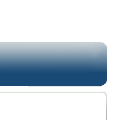Open Source Ictal-Interictal SPECT Analysis ToolsThe goal of ictal Single Photon Emission Computed Tomography (SPECT) is to localize the region of seizure onset for epilepsy surgery planning. ISAS (Ictal-Interictal SPECT Analysis by SPM) is an objective tool for analyzing ictal vs. interictal SPECT scans. ISAS was introduced and validated in two recent studies ( Chang et al, 2002; McNally et al., 2005 ). This site is a technical supplement to ( McNally et al., 2005 ) and ( Scheinost et al., 2009 ), which should enable ISAS to be implemented at any center for further study and analysis. The basic idea of ISAS is to compute the difference between an ictal and interictal SPECT scan for a single patient. The differences of the ictal/inter-ictal comparison are checked against a healthy normal database to determine the normal expected variation. Significant increases and decreases in CBF (cerebral blood flow) between the interictal and ictal SPECT can then be detected. The analysis can be conducted using two implementation options: 1.) ISAS BioImage Suite: a newly validated, open source, multi-platform image analysis suite, currently recommended for all new ISAS users. 2.) ISAS SPM Cerebral blood flow is known to increase during seizures at the site of seizure onset. Since SPECT is an indicator of CBF, increases in the SPECT during seizures can be useful for seizure localization. CBF decreases are more complicated, and occur both during and following seizures in multiple locations. Details of ISAS interpretation can be found in McNally et al., 2005, but in summary:
The requirements for implementing ISAS are relatively simple. All that is needed is a computer running either BioImage Suite or MATLAB with SPM and an operator with sufficient imaging experience to download and implement the analysis. On this site, we provide detailed instructions for implementing ISAS. In addition, we have made our database of normal SPECT pairs freely available, so that other centers can independently test and validate the method with their own patient populations. We also provide sample analyses, and description of difference imaging with other simpler tools, which can be done as a rapid check on ISAS results. We hope that this work will begin to fill the need for epilepsy SPECT image analysis, by providing freely available methods that can be implemented anywhere. --Blumenfeld lab
Contact Us
||
Jump to Top
|
|



